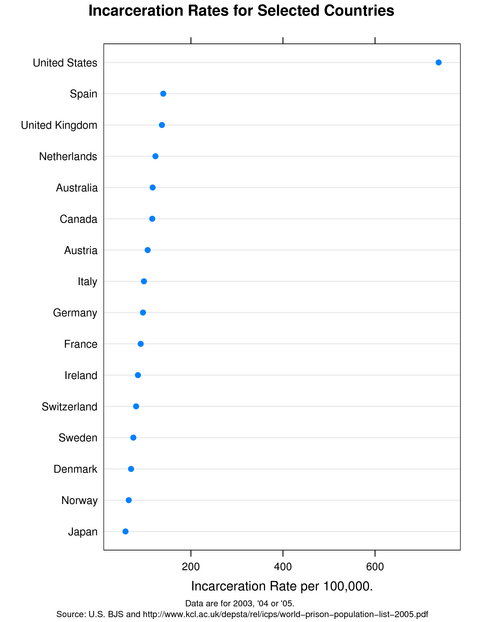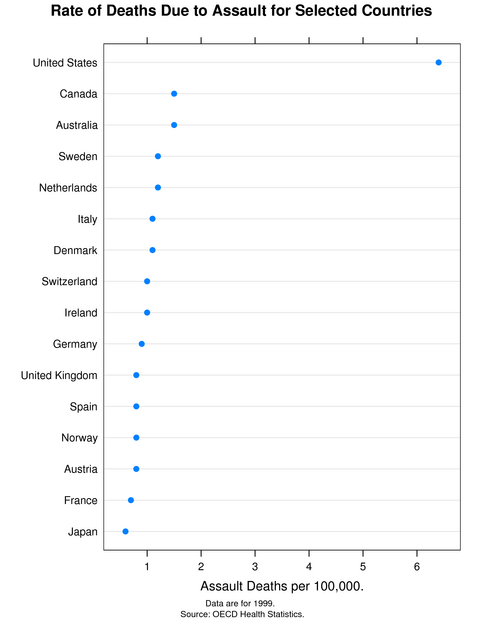Since then I've become interested in the proportion of black males that are in jail, in prison, or being "supervised" by the prison system. The Bureau of Justice reports these things. Current stats show 12% of black males to be incarcerated. This proportion has remained fairly constant over recent years. Maybe it's more interesting that the current BOJ report says "one in every 136 U.S. residents were in prison or jail" a year ago. Also it says 60% of inmates are racial or ethnic minorities. And: the number of people committed to do time is increasing faster than the number of people being released back to civilized society.
The BOJ doesn't point out, as others have, that the US imprisons far more of its citizens than do other nations. Kieran Healy, a favorite Crooked Timber author, has noticed the BOJ stats and done the following graph.

This comes from his second post on the topic. He explains: "The comments in my recent post about U.S. incarceration rates got a little bad tempered.... The point of the figure was to bring home that the U.S. has the highest rate of incarceration in the world, bar none. To illustrate this is not to explain it." The graph included with his first post showed many authoritarian states with lower incarceration rates than the US. The graph given above doesn't include places where "the whole country be a kind of prison." It compares the US with its peers and he points out the obvious: "By the standards of comparable countries, the U.S.’s rate of incarceration is frankly astonishing."
A footnote: Healy addresses another objection and gives yet another graph:
A second objection was, this only tells a little bit of the story, to which we can say, of course. Jet asks, “Yeah, and where would the US fall in a graph showing percentage of the population victimized by crime?” Cross-national comparisons of crime statistics are hard, because of reporting and definitional issues. (This is true in the U.S. between states, too, or even between different cities and neighborhoods.) Your best bet is crimes involving a dead victim, because that’s most often reported. So here is the same list of countries ordered this time by the rate of deaths due to assault in 1999, the most recent year I have available.

Addendum: I have this print on my wall in my office. When I put it up, I thought maybe people would ask about it so I could tell them it shows the Marshalsea Prison and explain its interesting history. No one has.





1 comment:
Free Download Latest Movies In Full HD 1080P
Post a Comment